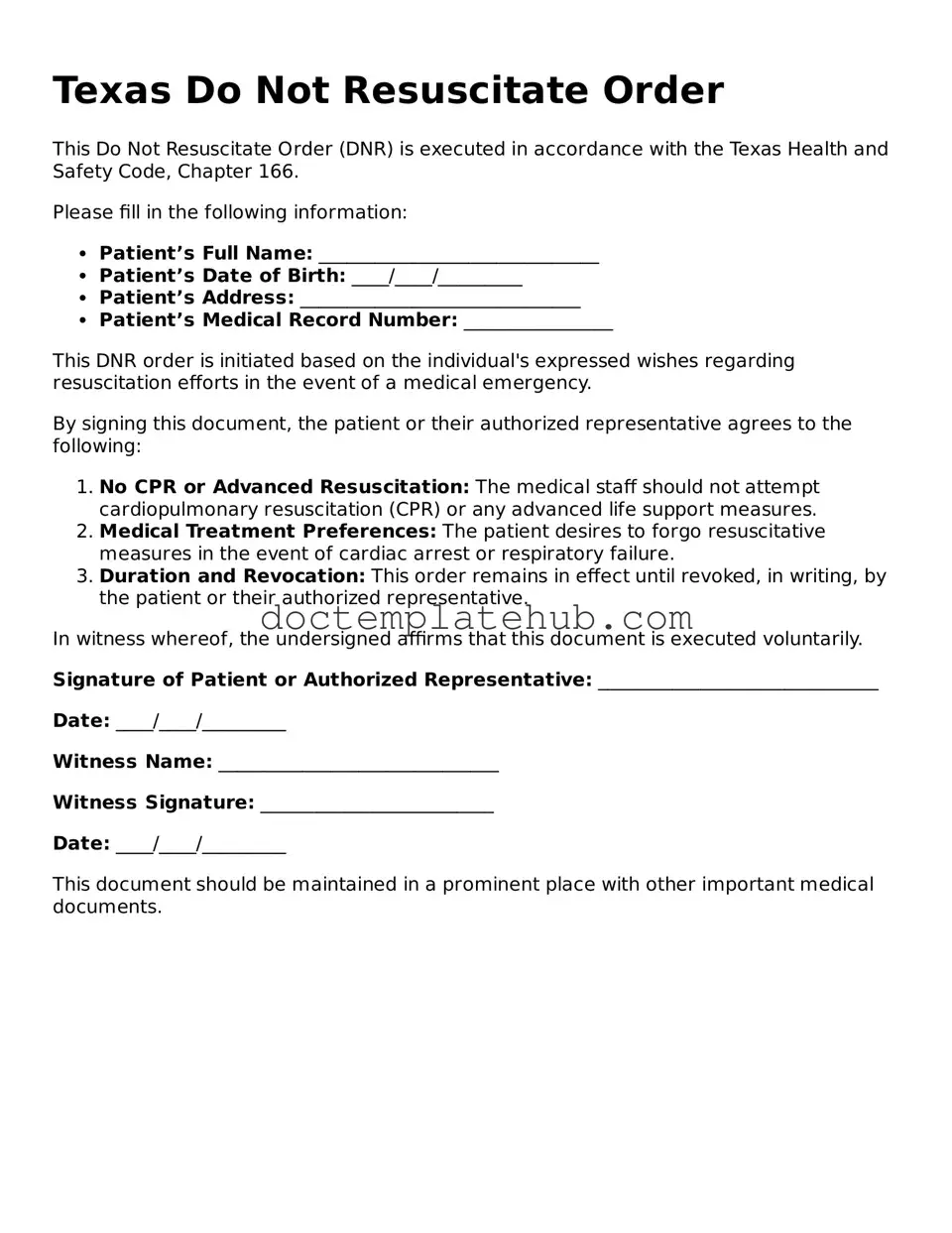What is a Texas Do Not Resuscitate Order (DNR) form?
A Texas Do Not Resuscitate Order (DNR) form is a legal document that allows individuals to express their wishes regarding resuscitation efforts in the event of a medical emergency. This form specifically instructs healthcare providers not to perform cardiopulmonary resuscitation (CPR) if the individual’s heart stops beating or if they stop breathing.
Who can create a DNR order in Texas?
In Texas, any adult who is capable of making their own healthcare decisions can create a DNR order. This includes individuals who are 18 years of age or older. Additionally, a parent or legal guardian can create a DNR order for a minor, and a legally appointed representative can do so for someone who is incapacitated.
How do I obtain a DNR form in Texas?
You can obtain a Texas DNR form from various sources, including hospitals, healthcare providers, and online resources. The Texas Department of State Health Services provides a downloadable version of the form on its website. It’s important to ensure that you are using the most current version of the form.
What information is required on the DNR form?
The DNR form requires basic information such as the patient’s name, date of birth, and a statement of the individual’s wishes regarding resuscitation. It must also be signed by the individual or their legally authorized representative, as well as a physician who is willing to honor the order.
Is a DNR order valid in all healthcare settings?
Yes, a valid Texas DNR order is recognized across various healthcare settings, including hospitals, nursing homes, and home care situations. However, it is crucial to ensure that the form is properly completed and signed to be considered valid.
Can I change or revoke my DNR order?
Yes, you have the right to change or revoke your DNR order at any time. To do this, simply create a new DNR order that reflects your current wishes, or verbally inform your healthcare provider that you wish to revoke the previous order. It’s advisable to keep a copy of the new order with you and inform your healthcare team of any changes.
What should I do with my DNR order once it is completed?
Once your DNR order is completed and signed, it’s important to keep it in a location that is easily accessible. You should provide copies to your healthcare providers, family members, and anyone else who may need to know your wishes regarding resuscitation. Consider discussing your decision with your loved ones to ensure they understand your preferences.
Will having a DNR order affect the quality of my medical care?
No, having a DNR order does not mean that you will receive any less medical care. Healthcare providers are still obligated to provide necessary medical treatments and interventions that do not involve resuscitation. A DNR order specifically pertains to resuscitation efforts only.
Can I have a DNR order if I am not terminally ill?
Yes, you can have a DNR order even if you are not terminally ill. The decision to create a DNR order is based on your personal values and preferences regarding end-of-life care. It is essential to have open discussions with your healthcare provider to understand the implications of a DNR order and how it aligns with your overall healthcare goals.
Where can I find more information about DNR orders in Texas?
For more information about DNR orders in Texas, you can visit the Texas Department of State Health Services website or consult with your healthcare provider. They can provide guidance and resources to help you understand the process and ensure that your wishes are respected.
